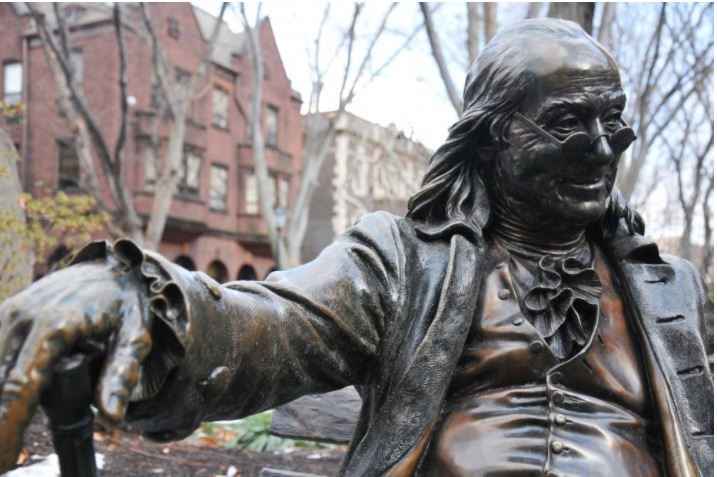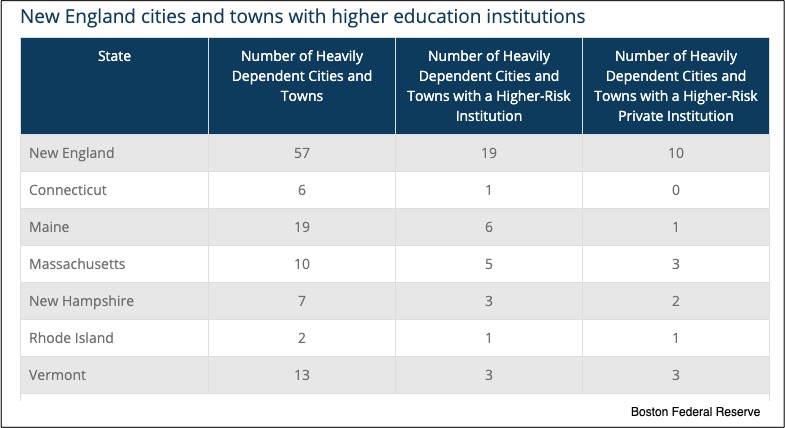When the media talk about the schools and Covid-19, they focus on primary, middle, and high school students. If the kids are home, then they learn less while their parents have a tough time working.
For college shutdowns, though, many of the worries are different.
College Towns
A recent Boston Federal Reserve study took a look at the towns located near New England’s 208 colleges and universities. They concluded that higher education is responsible for an average of 3.4 percent of all employment while in certain areas, a whopping 38 percent is a possibility.
Below, the darkest shades are for communities where more than 10 percent of the jobs come from local colleges and universities:
Meanwhile, with Maine at the top, there are 57 New England communities that are heavily dependent on the nearby college or university:
Covid-19 Shutdowns
Let’s assume that a college or university responds to Covid-19 by teaching remotely. At the school, revenue could drop because of student departures, tuition discounts, and eliminated fees. The employees that are laid off or furloughed spend less locally and could lose tuition grants given to them and their children. From there, we can look at the town where rents might not be paid and the stores, restaurants, and bars that lose student, faculty, and staff business.
In addition, when sports are cancelled, the impact can be huge. Texas A&M has said that each football game generates $20 million in consumer spending. The 60,000 (or so) people who attend Texas Tech games bring millions of dollars to Lubbock. On game days, a Lubbock sporting goods store selling team merchandise hires 35 extra employees. Baylor athletics has said they generated $373.3 million for Waco’s economy.
Our Bottom Line: Externalities
An economist might say that when employment, wages, and student driven consumption shrink, Covid-19 is creating a slew of negative externalities. Defined as the harmful impact of a contract or decision on an uninvolved third party, a negative externality can ripple through a community. My favorite example is when fumes from a hot sauce maker reputedly gave its neighbors heartburn. It really happened to Sriracha.
Somewhat similarly, the impact of college shutdowns from Covid-19 travel beyond their source. The school itself, its employees, and its students buy goods and services at local establishments that range from bars to dry cleaners. Football alone is a multi-million dollar activity.
So, what does Covid-19 teach us about a college town? That the jobs and wages that spillover from the schools fuel the local economies. When the schools shutdown, local communities suffer.
My sources and more: A Boston Fed paper says the most about Covid’s impact on college towns. Then, there is more inThe Washington Post, and the Caller Times.
Our featured image is from The Daily Pennsylvanian at the University of Pennsylvania.








